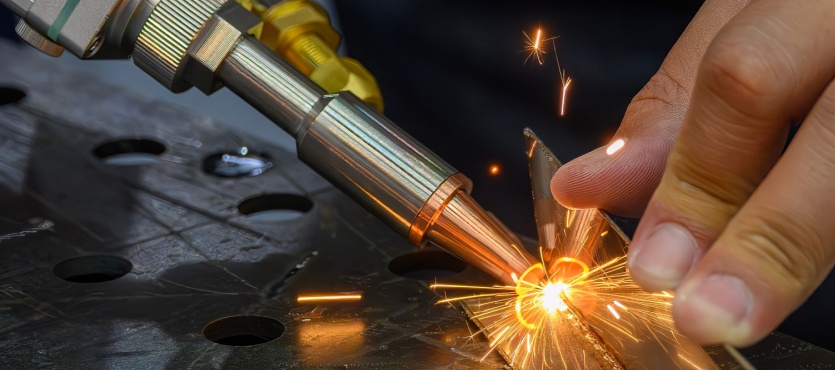When it comes to welding, selecting the appropriate technique is vital for achieving the desired outcome. The choice between Mig (Metal Inert Gas) and Tig (Tungsten Inert Gas) welding can significantly influence the quality, efficiency, and overall success of your project. Each technique has unique benefits, making them suitable for different applications. Understanding the distinctions between these methods is essential for ensuring that your project meets its technical and aesthetic goals.
Understanding Mig Welding
Mig welding, also referred to as Gas Metal Arc Welding (GMAW), employs a continuously fed wire as an electrode along with an inert gas to shield the weld area from contamination. This process is widely recognized in the welding industry for its speed and efficiency.
Mig welding is significantly faster, making it ideal for projects where time is of the essence. Additionally, it is relatively easy to learn, making it accessible even to beginners. It is also versatile, capable of working with various materials such as steel, aluminum, and stainless steel. Due to its efficiency, Mig welding is often more cost-effective, especially in large-scale projects.
Common applications of Mig welding are found in industries that prioritize speed and volume. In the automotive industry, Mig welding is frequently used for tasks such as body repairs, exhaust systems, and manufacturing processes. The construction industry utilizes Mig welding for structural work, including the fabrication of steel frameworks and other large-scale metal assemblies. In manufacturing, particularly in mass production settings, Mig welding is preferred due to its ability to produce consistent, strong welds at a rapid pace, making it a highly efficient method for assembly line production.
Mig welding also has a few limitations. For example, it may not be the best choice for projects requiring extremely fine detail or those involving very thin metals, as the heat generated can sometimes cause warping or burn-through. Additionally, because Mig welding typically uses a filler material, it might not always produce as clean or visually appealing welds as Tig welding.
Understanding Tig Welding
Tig welding, or Gas Tungsten Arc Welding (GTAW), is a process that utilizes a non-consumable tungsten electrode to produce the weld. Unlike Mig welding, Tig welding requires manual feeding of the filler material into the weld puddle while the heat is controlled with a foot pedal or hand-held torch.
Tig welding is celebrated for its precision and control. The ability to manually manage the heat and filler material allows for highly detailed and high-quality welds. This precision results in aesthetically pleasing welds, making Tig welding the technique of choice for projects where appearance is crucial. Moreover, Tig welding produces strong, durable welds that are less susceptible to defects, making it suitable for critical applications where weld integrity is vital.
The versatility of Tig welding extends beyond simple material compatibility. Tig welding is often the preferred method for joining thin or delicate materials, such as aluminum and magnesium, which are prone to warping under excessive heat. This method is frequently used in industries where precision and appearance are paramount, such as aerospace, where components must meet strict safety and performance standards. Artistic welding projects also benefit from the clean and visually appealing welds produced by Tig welding, making it a popular choice among artists and craftsmen.
While Tig welding offers unmatched precision and control, it does come with certain drawbacks. The process is slower than Mig welding, which can lead to higher labor costs, particularly on large projects. Additionally, the skill required to perform Tig welding at a high level means that not all welders are proficient in the technique, potentially limiting the availability of qualified professionals.
Choosing the Right Technique for Your Project
The decision between Mig and Tig welding hinges on the specific requirements of your project. If your priorities are speed and cost-efficiency, Mig welding might be the better option, especially for large-scale projects with tight timelines. Its ability to produce strong welds quickly makes it ideal for industrial applications where time and budget constraints are significant factors. However, if your project requires a high degree of precision, strength, and aesthetic quality, Tig welding could be the optimal choice. This method is particularly suited for projects that demand intricate and high-quality welds, such as those in the aerospace industry or artistic endeavors.
The material you are working with can also influence your choice. While both Mig and Tig welding can be used on a variety of materials, Tig welding offers superior control and quality on thinner or more delicate metals. This makes it a better choice for projects involving materials like aluminum or magnesium, which require careful handling to avoid damage. In contrast, Mig welding excels in situations involving thicker materials and where faster production times are necessary. For example, steel fabrication in the construction industry often benefits from the speed and efficiency of Mig welding.
Tailoring the Welding Technique to Your Project’s Needs
Understanding the strengths and limitations of Mig and Tig welding is essential to ensuring the success of your welding project. Both techniques have their own unique advantages and are suited to different types of work. Whether you need the speed and efficiency of Mig welding or the precision and control of Tig welding, choosing the right method can make all the difference in achieving the desired outcome for your project.
At Sizemore Welding, we offer expert welding services tailored to meet your specific project needs. Our team is proficient in both Mig and Tig welding, ensuring you receive top-notch workmanship, regardless of the method used. We understand that each project is unique, and our skilled professionals are here to help you determine the best approach based on your specific requirements.
If you need any guidance on which welding technique is right for your project, don’t hesitate to contact us. Our experts are ready to assist you, ensuring your project is completed to the highest standards. Whether it’s a large-scale industrial application or a detailed, precision-focused task, we have the expertise and experience to deliver exceptional results.

